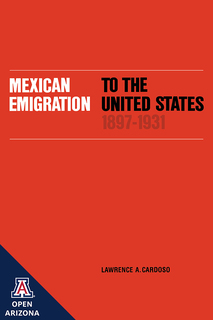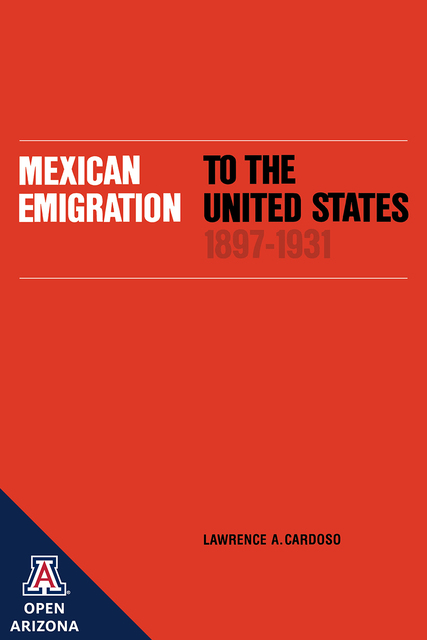Mexican Emigration to the United States, 1897–1931
Rapid change in the land and labor system in rural Mexico during the 1890s destroyed the ancestral homes of the peasantry, forcing them either onto privately owned haciendas or into the migratory labor stream. The anarchy, inflation, and fear for personal safety that resulted from the Mexican Revolution of the 1910 provided a further impetus to migratory patterns that otherwise might not have emerged, considering the people's strong ties to their ancestral land.
During the same era, capitalist modernization in the United States was creating a strong demand for low-paid, unskilled labor, especially for agricultural and railroad work. Mexico's newly created class of migrant workers rushed across the border to fill this demand, setting in motion a social, economic, and political phenomenon that Lawrence Cardoso analyzed here in detail. What set this study apart, however, is the author's focus on the ' Human element," as revealed through the Mexican workers' hopes, fears, and reactions to events of their time.
Texts
Published

Mexican Emigration to the United States 1897–1931: Socio-Economic Patterns
by Lawrence A. CardosoPublished- This text has 53 annotations
- This text has 3 highlights
Metadata
- isbn978-0-8165-4029-7
- publisherUniversity of Arizona Press
- publisher placeTucson, AZ
- rightsCC BY-NC-ND 4.0
- rights holderUniversity of Arizona Press
We use cookies to analyze our traffic. Please decide if you are willing to accept cookies from our website. You can change this setting anytime in Privacy Settings.


